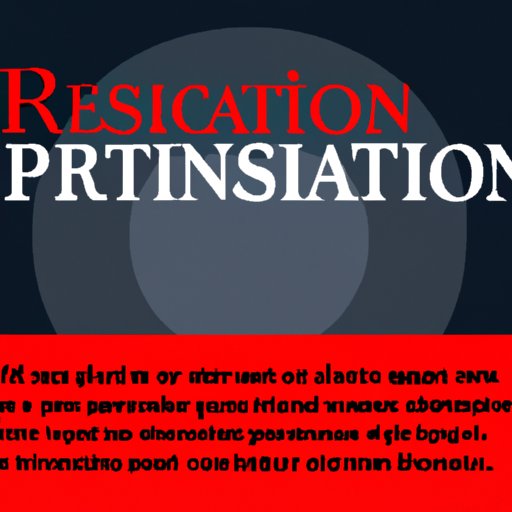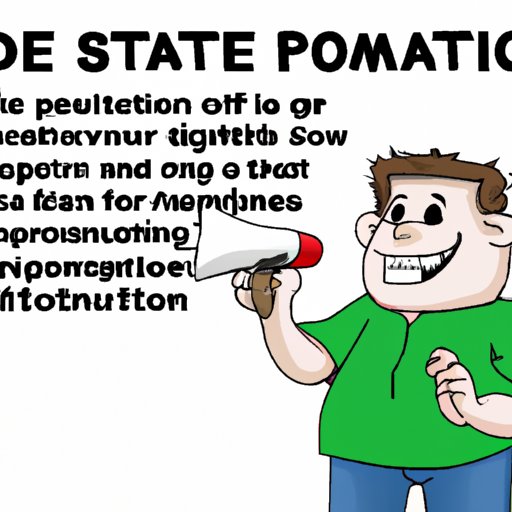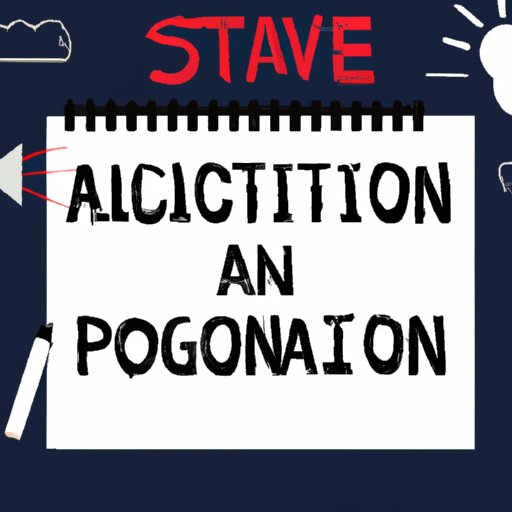Introduction
A petition is a formal document that requests an individual or organization to take action on a particular issue. Petitions can be used to raise awareness, create social or political change, or even reverse a decision. By starting a petition, you can join forces with like-minded individuals and work together to make a difference.
The benefits of starting a petition are numerous. Not only do petitions give you a platform to express your views, but they also provide a sense of community and solidarity among those who share your beliefs. Furthermore, a successful petition can lead to tangible results in the form of policy changes, increased public attention, or other outcomes.

Step 1: Research the Issue You are Passionate About and Why It Needs Attention
Before beginning your petition, it’s important to research the issue you’re passionate about and why it needs attention. This will help you determine the best course of action and decide how to focus your efforts.
Assess the Problem
First, assess the problem by gathering information related to the issue. Look for evidence of the issue’s prevalence, such as statistics, reports, surveys, or studies. If possible, find out what solutions have been attempted in the past and their effectiveness. Use this research to get a better understanding of the issue and identify potential areas of improvement.
Gather Supporting Evidence
Next, gather evidence to support your cause. This could include quotes from experts, personal testimonies, or media coverage. Having supporting evidence will make your petition more persuasive and help convince people to sign.
Step 2: Determine Your Goal for the Petition
Once you’ve done your research, it’s time to set a goal for your petition. Your goal should be clear, measurable, and achievable. This will give your supporters something tangible to strive for and keep them motivated.
Establish Clear, Measurable Goals
Your goal should be specific and measurable, such as “Pass legislation to reduce carbon emissions by 30% by 2025.” Setting a clear goal will help you stay focused and make your petition more effective.
Set a Deadline for Achieving Your Goals
In addition to setting a goal, it’s also important to set a deadline for achieving it. This will help keep your supporters motivated and encourage them to take action. According to a study conducted by the University of Toronto, deadlines are effective motivators because they provide a sense of urgency and pressure to complete tasks.

Step 3: Choose a Platform to Host Your Petition
Once you’ve established your goal and deadline, it’s time to choose a platform to host your petition. There are several popular platforms available, each with its own advantages and disadvantages.
Popular Petition Platforms
Popular platforms for hosting petitions include Change.org, GoPetition.com, and iPetitions.com. These sites offer features such as customizable templates, built-in sharing tools, and analytics to track progress. Additionally, most of these platforms are free to use.
Considerations for Choosing a Platform
When choosing a platform, consider the features offered, ease of use, and cost. Additionally, think about the visibility of the platform – some sites have higher visibility than others, which could increase the reach of your petition. Take the time to research each platform to find the one that best meets your needs.
Step 4: Craft an Impactful, Yet Concise Title and Description of Your Petition
Now that you’ve chosen a platform, it’s time to craft an impactful, yet concise title and description of your petition. The title should be catchy and reflect the purpose of your petition, while the description should be engaging and explain why your petition is important.
Make Your Title Catchy
Your title should be eye-catching and compel people to read further. It should also be concise – no more than two sentences – and include keywords related to your topic. Avoid using jargon or overly technical language – keep it simple and straightforward.
Write an Engaging Description
Your description should explain the purpose of your petition and why it’s important. It should be written in a compelling, yet concise manner. Be sure to include evidence to back up your claims and explain how signing the petition will lead to positive change.
Step 5: Create a Compelling Call-to-Action
After crafting an impactful title and description, it’s time to create a compelling call-to-action. This is the part of your petition where you ask people to take action and sign the petition.
Explain the Need for Action
Start by explaining the need for action. Explain why your petition is important and how signing it will help solve the problem. Use evidence to back up your claims and make it clear why taking action is necessary.
Offer Solutions
Next, offer solutions. Describe the steps that need to be taken to achieve your goal and how signing the petition will help move the process forward. Offer concrete solutions that people can understand and support.

Step 6: Promote Your Petition
Once your petition is ready, it’s time to promote it. Promotion is key to getting your petition noticed and gathering signatures. Fortunately, there are several ways to promote your petition and increase its reach.
Utilize Social Media
Social media is a powerful tool for promoting your petition. Share your petition on popular platforms such as Facebook, Twitter, and Instagram. Be sure to use relevant hashtags and post regularly to keep your supporters engaged.
Reach Out to Influencers
Another way to promote your petition is to reach out to influencers in your field. Influencers have large followings and can help spread awareness of your petition. Consider sending personalized emails or tweets to influential people in your industry.
Consider Paid Advertising
Finally, consider using paid advertising to promote your petition. Sites such as Facebook and Google Adwords allow you to target specific audiences and increase the reach of your petition. Paid advertising can be expensive, so make sure you set a budget before launching your campaign.
Step 7: Regularly Update Your Supporters
As your petition gains traction, it’s important to keep your supporters informed. Regular updates will help keep supporters engaged and motivate them to continue taking action. Here are a few tips for keeping your supporters updated:
Keep Supporters Informed
Send regular emails or newsletters to keep supporters informed of your progress. Include updates on the number of signatures, any news related to the issue, and any new developments. This will help keep supporters engaged and encourage them to continue taking action.
Ask for Feedback
Ask supporters for feedback on your petition. This will help you gauge the effectiveness of your efforts and make adjustments if necessary. Additionally, it will give supporters a sense of ownership and make them feel like their opinions are valued.
Conclusion
Starting a petition is an effective way to make your voice heard and bring about change. By following the steps outlined above, you can launch a successful petition and work towards achieving your goals. Remember to do your research, set clear goals, choose an appropriate platform, craft an impactful title and description, create a compelling call-to-action, promote your petition, and keep supporters informed. With hard work and dedication, you can make a difference.
(Note: Is this article not meeting your expectations? Do you have knowledge or insights to share? Unlock new opportunities and expand your reach by joining our authors team. Click Registration to join us and share your expertise with our readers.)
